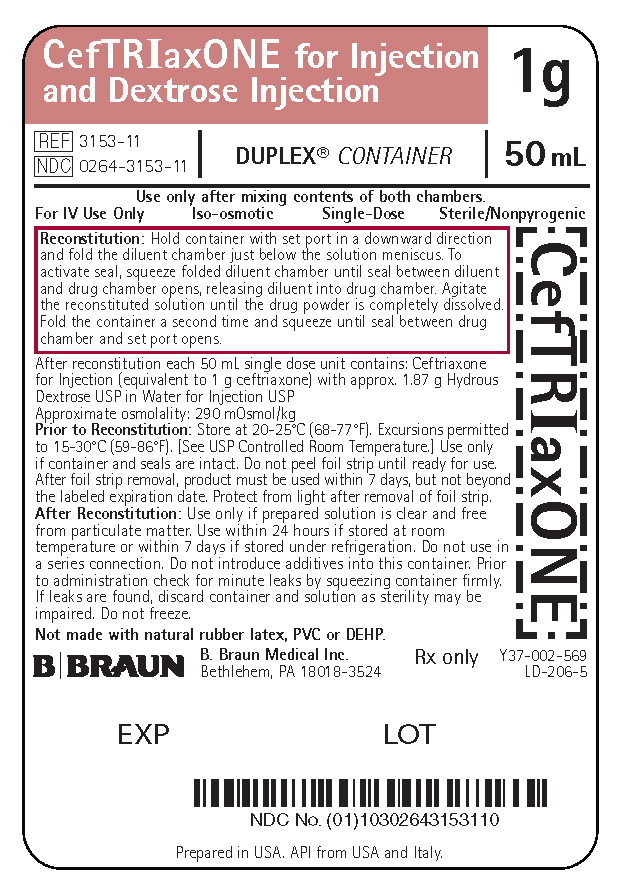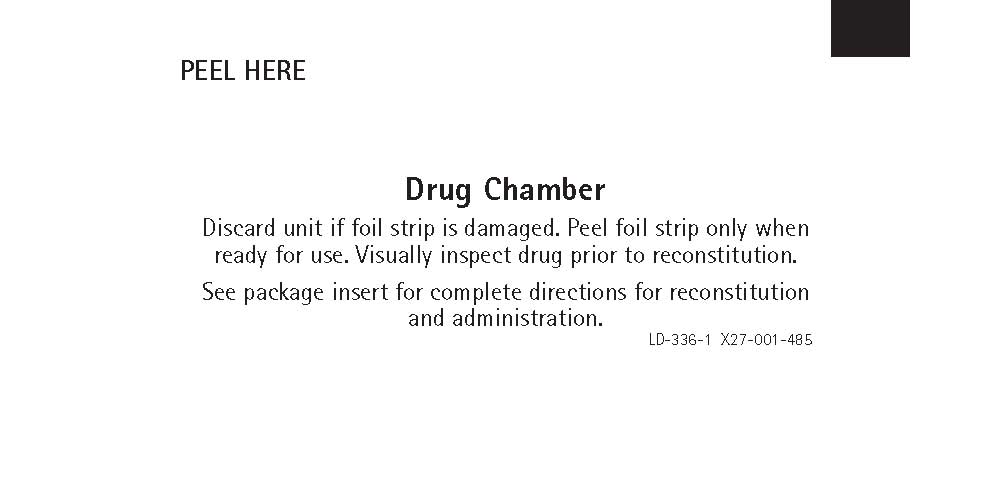American Academy of Pediatrics and other medical experts exclusively recommend to breastfeed the baby for first 6 months. Once you introduce baby to other foods it is recommended to breastfeed for at least first year of babys life. Taking medication while breastfeeding could be tricky as most drugs pass in breast milk. In this article we will evaluate Ceftriaxone And Dextrose | Ceftriaxone Injection for its safety in breastfeeding.
What is Ceftriaxone And Dextrose | Ceftriaxone Injection used for?
Ceftriaxone for Injection and Dextrose Injection is indicated for the treatment of the following infections when caused by susceptible bacteria. Ceftriaxone for Injection and Dextrose Injection is a cephalosporin antibacterial indicated for the treatment of the following infections caused by susceptible isolates of the designated bacteria: Lower Respiratory Tract Infections (1.1); Skin and Skin Structure Infections (1.2); Complicated and Uncomplicated Urinary Tract Infections (1.3); Pelvic Inflammatory Disease (1.4); Bacterial Septicemia (1.5); Bone and Joint Infections (1.6); Intra-abdominal Infections (1.7); Meningitis (1.8); and Surgical Prophylaxis (1.9). To reduce the development of drug-resistant bacteria and maintain the effectiveness of Ceftriaxone for Injection and Dextrose Injection and other antibacterial drugs, Ceftriaxone for Injection and Dextrose Injection should be used only to treat or prevent infections that are proven or strongly suspected to be caused by susceptible bacteria. (1.10) 1.1 Lower Respiratory Tract Infections Lower respiratory tract infections caused by Streptococcus pneumoniae, Staphylococcus aureus, Haemophilus influenzae, Haemophilus parainfluenzae, Klebsiella pneumoniae, Escherichia coli, Enterobacter aerogenes, Proteus mirabilis or Serratia marcescens. 1.2 Skin and Skin Structure Infections Skin and skin structure infections caused by Staphylococcus aureus, Staphylococcus epidermidis, Streptococcus pyogenes, Viridans group streptococci, Escherichia coli, Enterobacter cloacae, Klebsiella oxytoca, Klebsiella pneumoniae, Proteus mirabilis, Morganella morganii The efficacy for these organisms in this organ system were studied in fewer than ten infections., Pseudomonas aeruginosa, Serratia marcescens, Acinetobacter calcoaceticus, Bacteroides fragilis or Peptostreptococcus species. 1.3 Complicated and Uncomplicated Urinary Tract Infections Complicated and uncomplicated urinary tract infections caused by Escherichia coli, Proteus mirabilis, Proteus vulgaris, Morganella morganii or Klebsiella pneumoniae. 1.4 Pelvic Inflammatory Disease Pelvic inflammatory disease caused by Neisseria gonorrhoeae. Ceftriaxone sodium, like other cephalosporins, has no activity against Chlamydia trachomatis. Therefore, when cephalosporins are used in the treatment of patients with pelvic inflammatory disease and Chlamydia trachomatis is one of the suspected pathogens, appropriate antichlamydial coverage should be added. 1.5 Bacterial Septicemia Bacterial septicemia caused by Staphylococcus aureus, Streptococcus pneumoniae, Escherichia coli, Haemophilus influenzae or Klebsiella pneumoniae. 1.6 Bone and Joint Infections Bone and joint infections caused by Staphylococcus aureus, Streptococcus pneumoniae, Escherichia coli, Proteus mirabilis, Klebsiella pneumoniae or Enterobacter species. 1.7 Intra-abdominal Infections Intra-abdominal infections caused by Escherichia coli, Klebsiella pneumoniae, Bacteroides fragilis, Clostridium species or Peptostreptococcus species. 1.8 Meningitis Meningitis caused by Haemophilus influenzae, Neisseria meningitidis or Streptococcus pneumoniae. Ceftriaxone sodium has also been used successfully in a limited number of cases of meningitis and shunt infection caused by Staphylococcus epidermidis and Escherichia coli, however, the efficacy for these organisms in this organ system were studied in fewer than ten infections. 1.9 Surgical Prophylaxis The preoperative administration of a single 1 g dose of Ceftriaxone for Injection and Dextrose Injection may reduce the incidence of postoperative infections in patients undergoing surgical procedures classified as contaminated or potentially contaminated (e.g., vaginal or abdominal hysterectomy or cholecystectomy for chronic calculous cholecystitis in high-risk patients, such as those over 70 years of age, with acute cholecystitis not requiring therapeutic antimicrobials, obstructive jaundice or common duct bile stones) and in surgical patients for whom infection at the operative site would present serious risk (e.g., during coronary artery bypass surgery). Although ceftriaxone sodium has been shown to have been as effective as cefazolin in the prevention of infection following coronary artery bypass surgery, no placebo-controlled trials have been conducted to evaluate any cephalosporin antibacterial in the prevention of infection following coronary artery bypass surgery. 1.10 Usage To reduce the development of drug-resistant bacteria and maintain the effectiveness of Ceftriaxone for Injection and Dextrose Injection and other antibacterial drugs, Ceftriaxone for Injection and Dextrose Injection should be used only to treat or prevent infections that are proven or strongly suspected to be caused by susceptible bacteria. When culture and susceptibility information are available, they should be considered in selecting or modifying antibacterial therapy. In the absence of such data, local epidemiology and susceptibility patterns may contribute to the empiric selection of therapy.
Is using Ceftriaxone And Dextrose | Ceftriaxone Injection unsafe in breastfeeding? Can there be bad consequences for baby if I use it while breastfeeding?
As per our analysis Ceftriaxone And Dextrose | Ceftriaxone Injection contains only one ingredient and that is Ceftriaxone. We have analyzed Ceftriaxone and it seems to be safe to use Ceftriaxone while breastfeeding, that means usage of Ceftriaxone And Dextrose | Ceftriaxone Injection shall be safe while breastfeeding. Below you can check more details of Ceftriaxone usage in breastfeeding. We recommend you to go through provided detailed analysis as below take decision accordingly.
Statement of Manufacturer/Labeler about breastfeeding usage
8.3 Nursing Mothers Ceftriaxone is excreted in human breast milk. Caution should be exercised when Ceftriaxone for Injection and Dextrose Injection is administered to a nursing woman.
Ceftriaxone And Dextrose | Ceftriaxone Injection Breastfeeding Analsys
SafeCAS Number: 74578-69-1
Third generation cephalosporin for injection or parenteral administration. Like most cephalosporins for which data are available, it is excreted in breast milk in clinically non-significant amount (Kafetzis 1983, Hirabayashi 1988, Bourget 1993) with no problems being reported in infants whose mothers were treated with it. Because a low oral bioavailability the absorption from ingested milk to infant’s plasma would be zero or negligible, except in case prematurity and immediate neonatal period, when intestinal absorption may be increased. It is a medication which is approved for use in infants and neonates. Be aware of the possibility of false negative results of cultures in febrile infants whose mothers are taking antibiotics as well as the possibility of gastroenteritis (Ito 1993) by altering the intestinal flora. American Academy of Pediatrics 2001: Medication usually compatible with breastfeeding.WHO List of Essential Medicines 2002: compatible with breastfeeding.
Ceftriaxone And Dextrose | Ceftriaxone Injection Breastfeeding Analsys - 2
CAS Number: 73384-59-5
Limited information indicates that ceftriaxones produce low levels in milk which are not expected to cause adverse effects in breastfed infants. Occasionally disruption of the infant's gastrointestinal flora, resulting in diarrhea or thrush have been reported with cephalosporins, but these effects have not been adequately evaluated. Ceftriaxone is acceptable in nursing mothers.

I already used Ceftriaxone And Dextrose | Ceftriaxone Injection and meanwhile I breastfed my baby should I be concerned?
It is always a good idea to keep your healthcare provider or doctor informed about your drug usage during pregnancy and breastfeeding but if you have not informed your doctor about Ceftriaxone And Dextrose | Ceftriaxone Injection and have used it then do not panic as Ceftriaxone And Dextrose | Ceftriaxone Injection is mostly safe in breastfeeding and should not cause any harm to your baby.
My health care provider has asked me to use Ceftriaxone And Dextrose | Ceftriaxone Injection, what to do?
Definitely, Ceftriaxone And Dextrose | Ceftriaxone Injection is safe in lactation for baby. No wonder your doctor has recommended it.
If I am using Ceftriaxone And Dextrose | Ceftriaxone Injection, will my baby need extra monitoring?
No extra baby monitoring required while mother is using Ceftriaxone And Dextrose | Ceftriaxone Injection
Who can I talk to if I have questions about usage of Ceftriaxone And Dextrose | Ceftriaxone Injection in breastfeeding?
US
National Womens Health and Breastfeeding Helpline: 800-994-9662 (TDD 888-220-5446) 9 a.m. and 6 p.m. ET, Monday through Friday
UK
National Breastfeeding Helpline: 0300-100-0212 9.30am to 9.30pm, daily
Association of Breastfeeding Mothers: 0300-330-5453
La Leche League: 0345-120-2918
The Breastfeeding Network supporter line in Bengali and Sylheti: 0300-456-2421
National Childbirth Trust (NCT): 0300-330-0700
Australia
National Breastfeeding Helpline: 1800-686-268 24 hours a day, 7 days a week
Canada
Telehealth Ontario for breastfeeding: 1-866-797-0000 24 hours a day, 7 days a week
Drug Brands with same Active ingredients



